The NYC Disparity Report 2016 originally emerged as a way to visualize city-wide trends in disparities in the context of the work of New York City’s Young Men’s Initiative (YMI). Since then, the Center for Innovation through Data Intelligence (CIDI) has recognized the importance of expanding this work and developing a resource to understand racial disparities for both men and women across NYC over time.
NYC’s Disparity Report
With the adoption of the 2016–2017 New York State Budget, New York became the first state in the union to accept the President’s challenge and enacted the My Brother’s Keeper initiative into law. The budget included a $20 million investment in support of the initiative to improve outcomes for boys and young men of color. New York State continues to include major investments in the budget each year. The New York State My Brother’s Keeper Community Network with more than 20 member communities continues to grow improving outcomes for boys and young men of color.
Some Findings from The NYC Disparity Report 2016
Disparities among groups continue; several indicators have experienced significant decreases in disparity for young men and women of color. This warrants more in-depth exploration into the underlying factors that are allowing some disparities to shrink while others remain. Positive outcomes have generally increased over the available time frames for all groups. However, this trend has not affected all groups equally.
For most of the indicators, White and Asian young men and women have comparable rates of outcomes while Black and Hispanic young men and women fare worse.
Below are some Education Trends in Disparities.
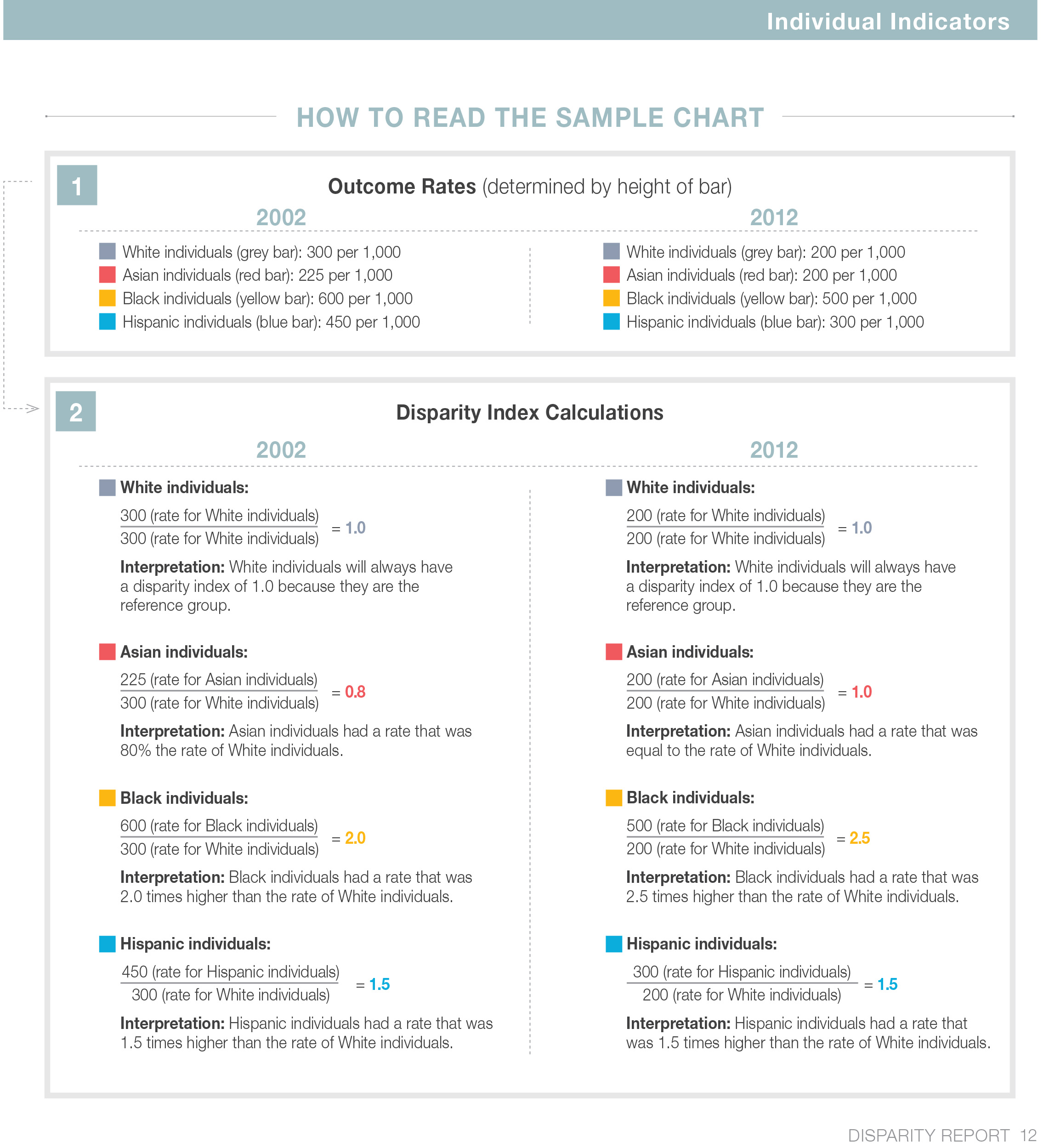
Students in Grades 3-8: Meeting or Exceeding English Standards
In 2014, Asian males performed about the same as White males on the tests, while Black and Hispanic met English standards at a rate that was 30% that of White males. Female students followed the same pattern in the disparity index, although all groups had higher rates than male students.
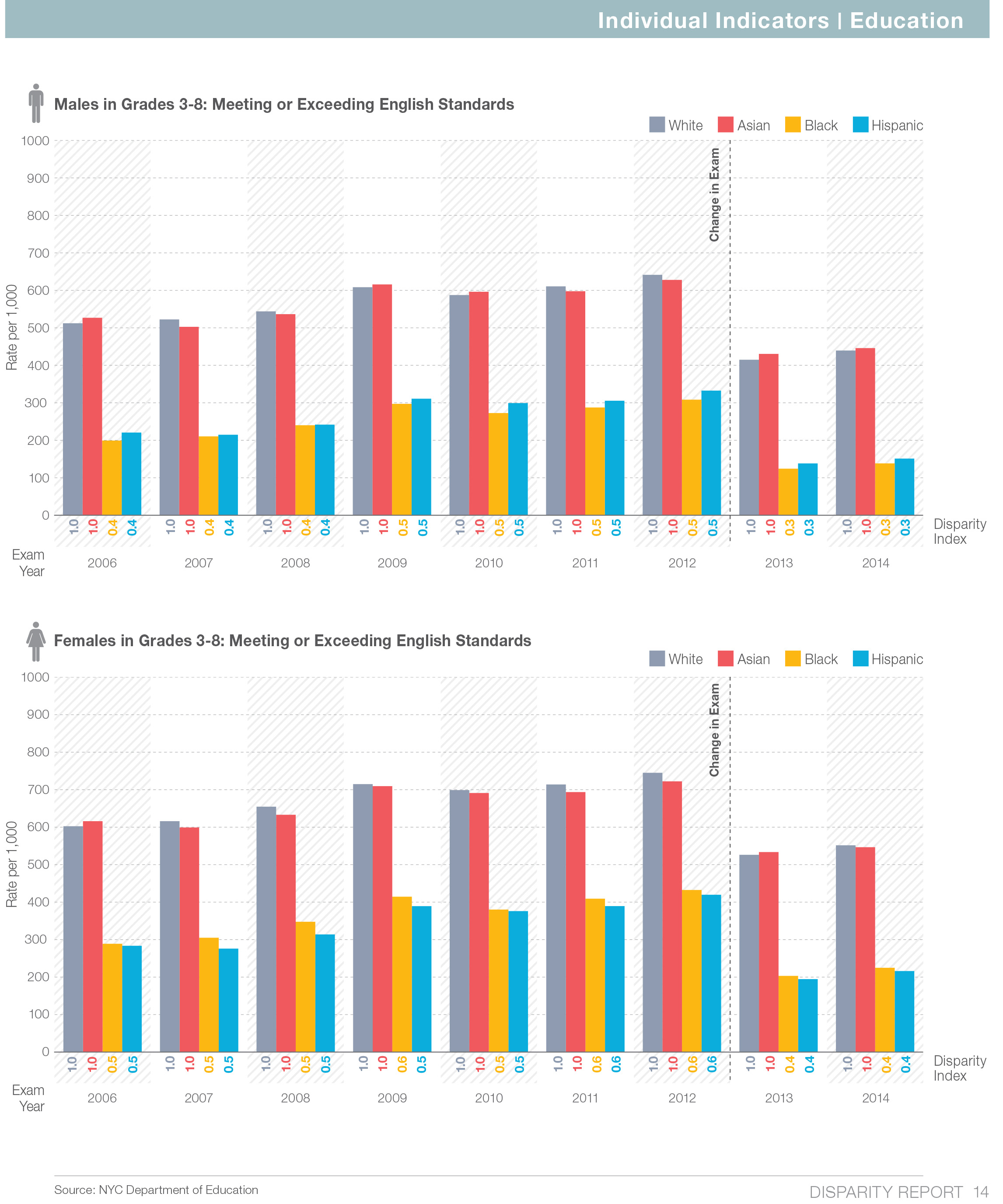
Students in Grades 3-8: Meeting or Exceeding Math Standards
The patterns in disparity indices among racial groups are similar to those found in the English proficiency indicator, with both Black and Hispanic students across genders meeting math standards at a rate that was 30-40% the rate of their White peers in 2014.
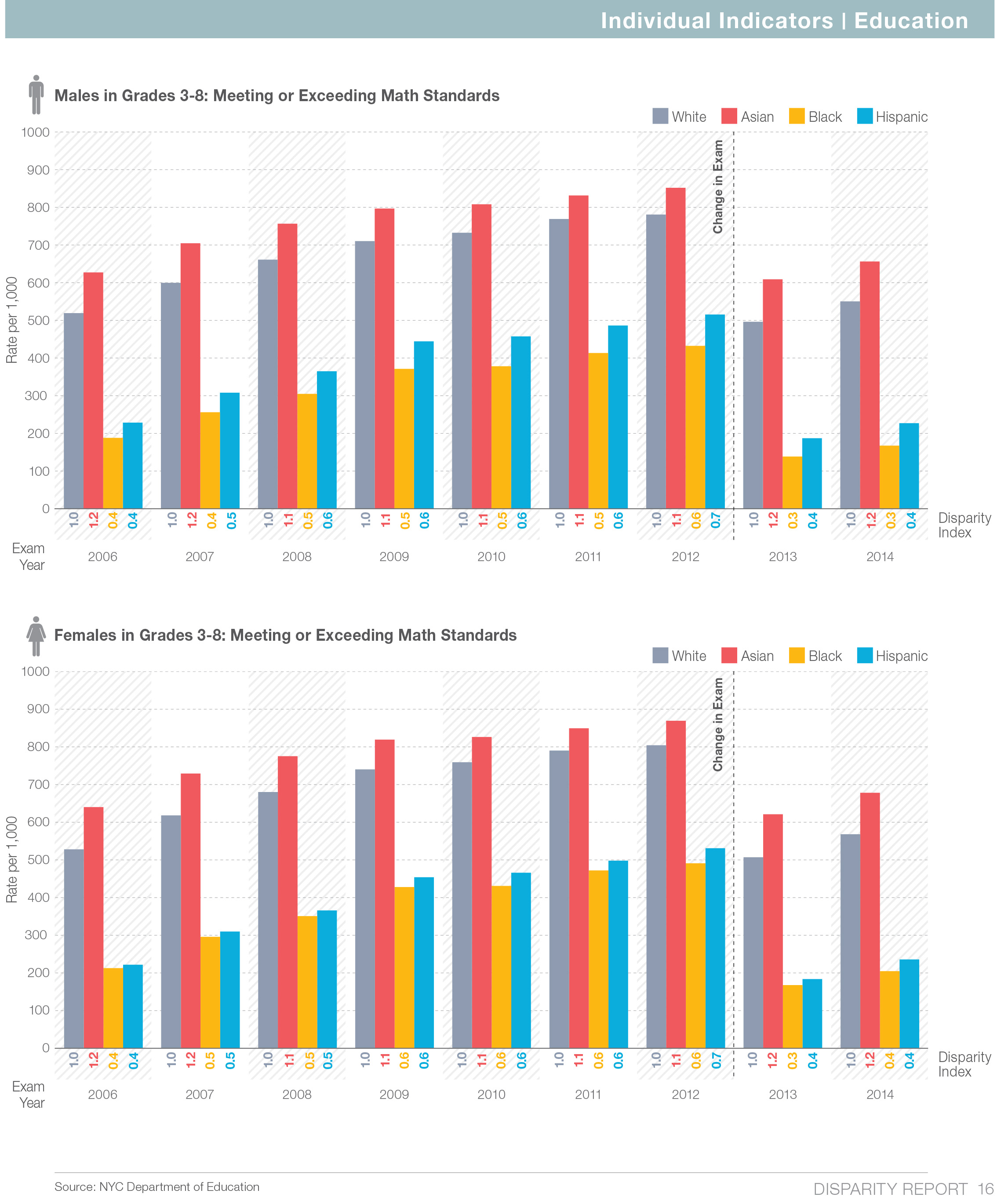
High School Students: Graduating in 4 Years
In 2014, Asian males and females graduated at about the same rate as their White peers and this remained fairly constant over time. The graduation rate for Black and Hispanic females and Black males was about 80% that of their White peers…. This remained constant for the females since 2008, but was a decrease in disparity for Black males compared to previous years. Hispanic males had the lowest graduation …….
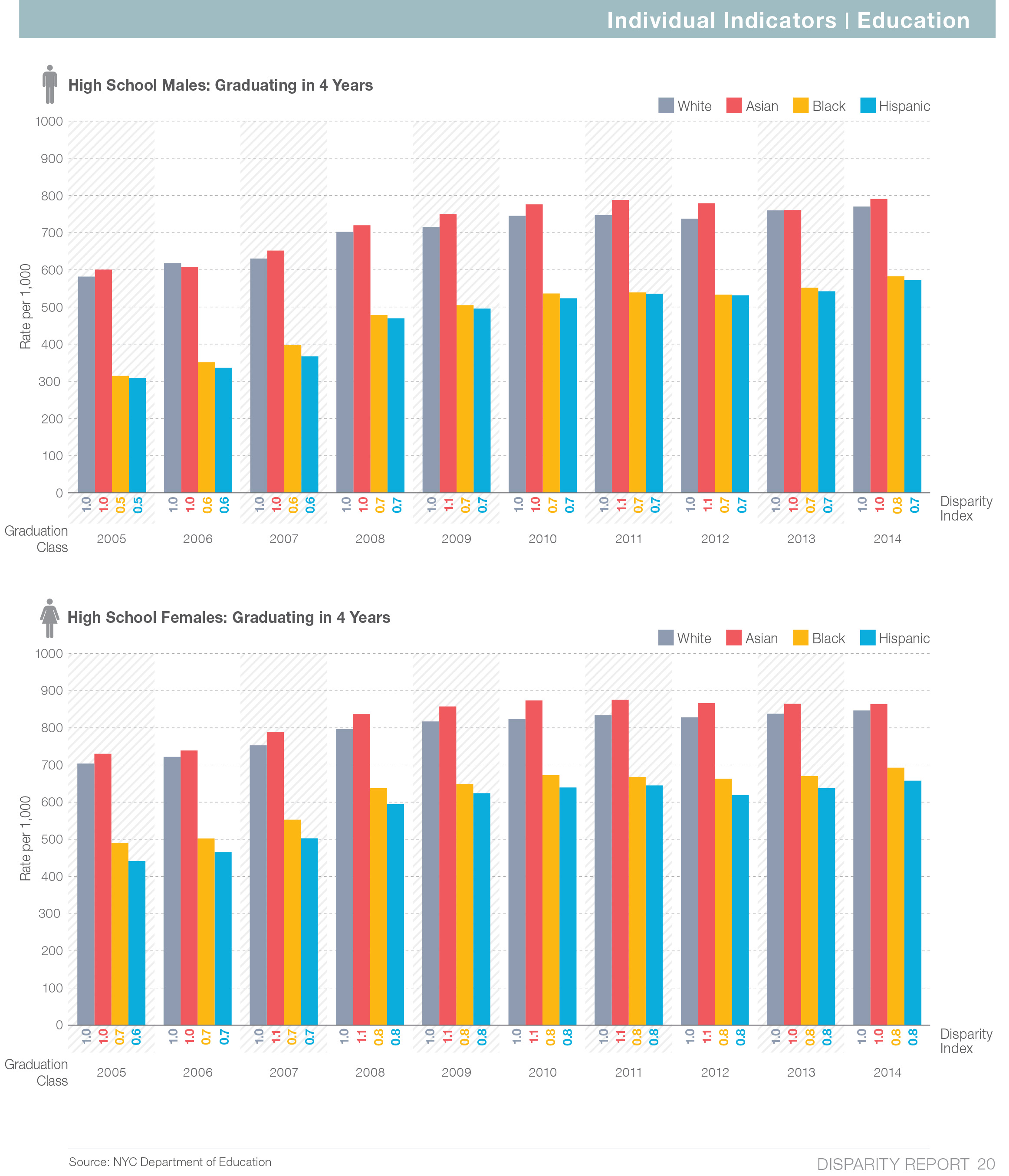
High School Student: Dropouts
In 2014, Asian males dropped out of high school at about the same rate as White males, while the dropout rate for Black males was 1.5 times higher than White males and the dropout rate for Hispanic males was 1.9 times higher.
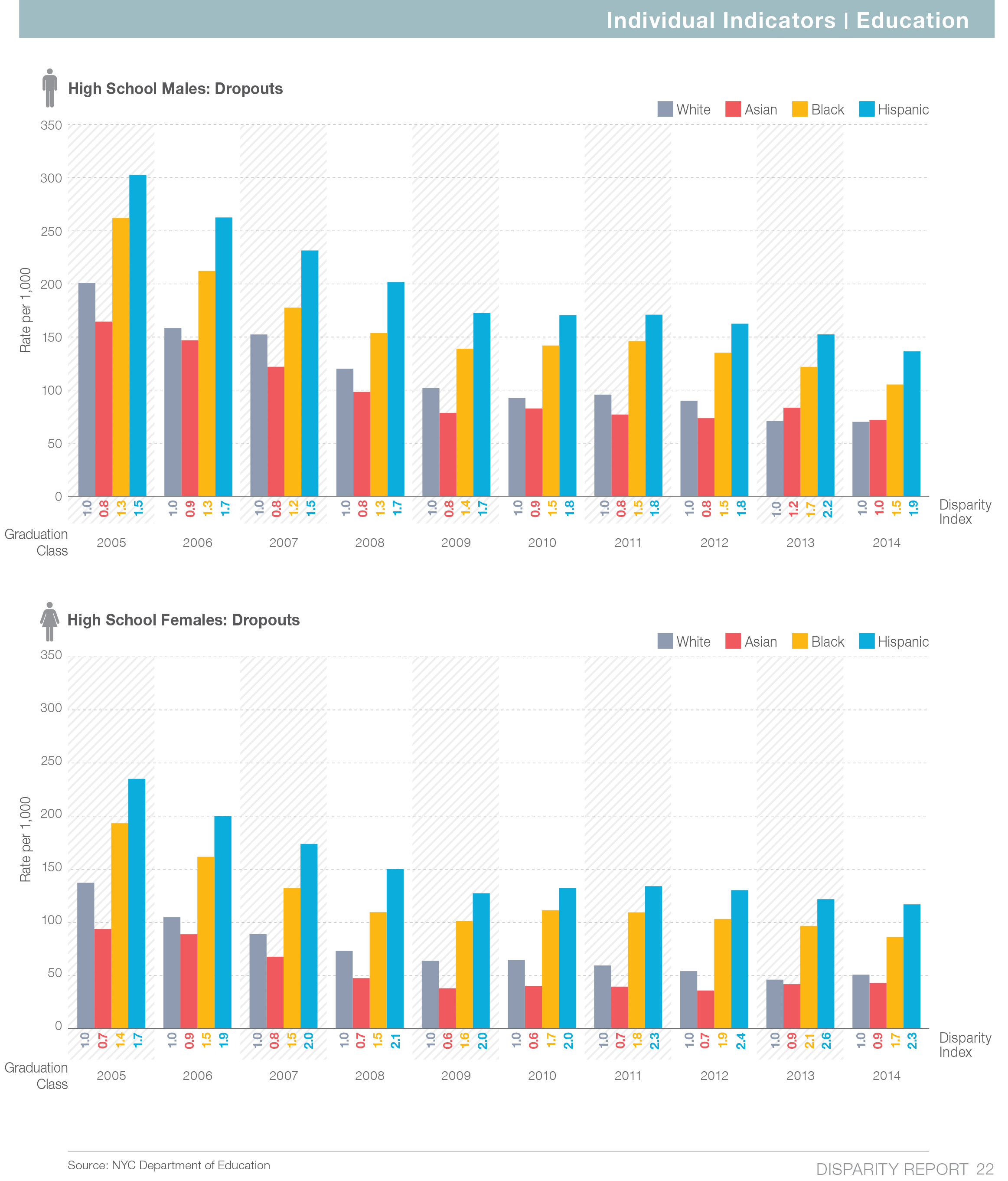
To learn more about The Disparity Report, please visit NYC’s Disparity Report




